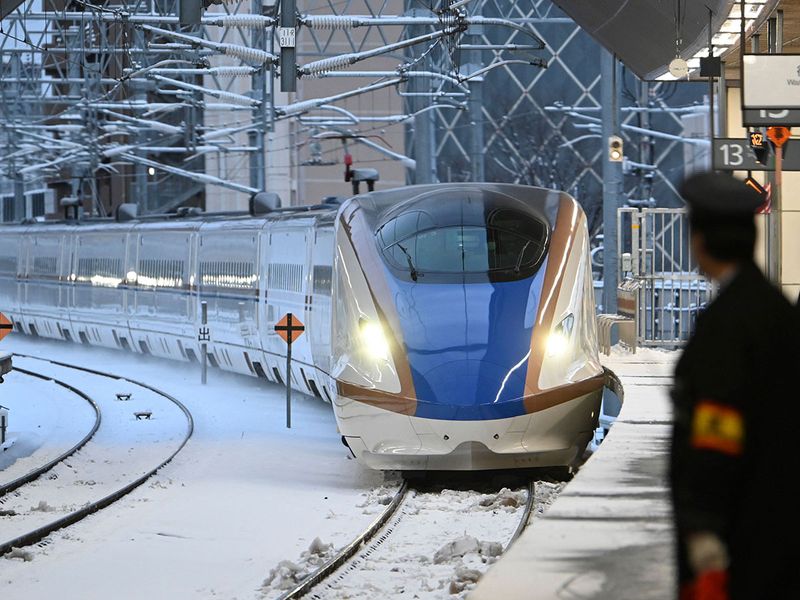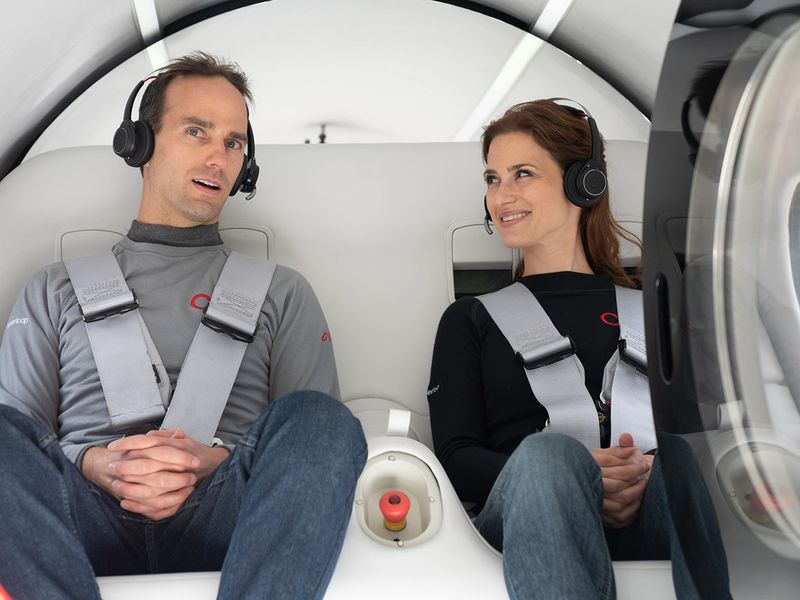
Question: Why are most new train lines in the world electric, instead of diesel or fossil fuel-powered?
Answer: Electric trains win on many counts vs legacy trains.
Transportation powered by electrons forms part of "think big" challenges – and opportunities – centred around energy storage, artificial intelligence, robotics, DNA sequencing, and blockchain. Together, they are changing the way the world works.
Below are the 9 compelling reasons why electric trains are the future:
#1. Energy efficiency
Electric trains are more energy-efficient vs traditional fossil fuel-powered trains. They also consume less energy per passenger-kilometre than road transport.
Electric vehicles (EVs) are more efficient than internal combustion engine cars. Yet, compared to even the most efficient EVs, rail is both more energy efficient and environmentally-friendly – i.e. France’s TGV (320 km/h) consumes 3-4 kWh per 100 km against 15-20 kWh for an electric car.
Here's another: Physics favours high-speed rail. Steel wheels on steel rails offer superior energy efficiency to rubber wheels on any driving surface. For example, a standard 16-car “Shinkansen” train can accommodate approximately 1,300 passengers, with a maximum operating speeds ranging from 200-320 km/h (125-200 mph), while average speed between stations is around 260 km/h (160 mph).
China's high-speed rail (top speed: 350 km/h or 217 mph on the Beijing–Shanghai line), too, is renowned for their energy efficiency, thanks to aerodynamics, lightweight construction, and regenerative braking.
1.35 m
kilometers of installed train lines globally (31% located in Europe, 32% in Asia/Oceania, 20% in America, and 7% in Africa), as per World Bank (2020 data)
#2. Cost
The cost of electricity is generally lower than the cost of fossil fuels, leading to reduced operating costs for electric trains. Electric trains are more energy-efficient, consuming less energy per passenger-kilometre. This translates to lower energy bills and reduced fuel costs. According to the ABB Group, since electric trains have fewer moving parts, this leads to lower maintenance costs and less downtime.
The absence of mechanical components such as diesel engines and gearboxes reduces the need for frequent repairs and replacements. Gannett Fleming, in a report, also explained that the cost of electricity is generally lower than the cost of fossil fuels, especially in regions with abundant renewable energy sources. This provides a significant cost advantage for electric trains.
#3. Technological advancements
Ongoing advancements in controls, signalling, breaking, rolling stock, battery technology and charging infrastructure are making electric trains more practical and efficient.
The global railroad industry market was valued at $295 billion in 2021, and is expected to expand at a compound annual growth rate of 4.4% from 2022 to 2030.
There is a significant expansion in Asia-Pacific, where projects are already approved and currently in design and construction stages.
The combination of energy efficiency, lower maintenance costs, reduced running costs, and environmental benefits make electric trains a more cost-effective option compared to traditional trains in many cases.
The following 10 years would prove crucial – and exciting – for rail. In an industry report,
4,000 b
passengers-kilometres moved by the global railroad transportation system per year (World Bank data)Usage has also gone up. In 2023, high-speed rail traffic in Spain jumped 37 per cent. https://x.com/HSRailGroup/status/1830942066399944737
In Dubai, Metro ridership has shown a spike in growth. From September to the end of December 2009 (four months), the number of riders rose from 6.089 million to 38.089 million in 2011.
With an average daily ridership of approximately 730,000 passengers, the Dubai Metro today is the preferred mode of transportation for many residents and visitors. In the last 15 years, Dubai Metro has consistently grown in ridership, serving 2.4 billion passengers.
#4. Reliability
With less moving parts and simpler design, electric trains are less prone to mechanical breakdowns compared to traditional trains, leading to more reliable and punctual service. This leads to electric trains to require less maintenance than traditional trains, as they have fewer moving parts.
Advanced control systems and computer diagnostics allow electric trains to incorporate monitoring and management system to various aspects of train operation, including power distribution, braking, and acceleration. These systems can help to prevent breakdowns, downtimes and ensure smooth operation.
Electric trains are also generally considered safer than traditional trains due to iterations in safety features, reducing risk of fires or explosions.
Hyperloop: Hyperloop is a high-speed transportation system that involves traveling through low-pressure tubes. Pods carrying passengers or cargo are propelled by electromagnetic forces, allowing for rapid transit between cities. While still under development, hyperloop has the potential to revolutionize long-distance travel.
Autonomous Trains: Autonomous trains, equipped with advanced sensors and artificial intelligence, can operate without human intervention. This technology can improve safety, efficiency, and reliability, particularly in urban areas with high traffic volumes.
Boring: Ongoing innovations in tunnel boring machine (TBM) technology, such as cutterhead design and automation, are driving down costs and increasing efficiency.
Project scale: Larger-scale tunneling projects often benefit from economies of scale, leading to lower unit costs.
And in most non-urban settings, there’s no need for TBMs, as trains can simply run at-grade or overhead.
#5. Urban development
Electric trains can support urban development by significantly curbing traffic congestion in major cities, andproviding a reliable and efficient alternative to cars. This leads to improved air quality, reduced noise pollution, faster travel times, and overall quality of life.
Trains facilitate the development of new urban centres and suburbs, as people can live further away from the city centre and still commute easily to work. This helps spread the population more evenly and reduces pressure on existing urban areas, boosting economic growth by improving accessibility to jobs, education, and healthcare.
It creates a "virtuous cycle" that can attract businesses and investment, creating new opportunities for employment and development.
Trains also allow for a much higher land utilisation: A high-speed rail line has a transport capacity twice as large as a bidirectional three-lane highway, but with a much lower land consumption.
#6. Cleaner
Electric trains produce significantly fewer greenhouse gas emissions than diesel or fossil fuel-powered trains, making them a more sustainable option for transportation. While not a direct cost saving, the reduced greenhouse gas emissions and improved air quality associated with electric trains can lead to long-term economic benefits and reduced healthcare costs.
E-trains are seen as the key achieve the low-carbon transformation of transportation, thus improving energy security. Even though Europe has the largest infrastructure, Asia accounts for 81% of the passengers-kilometer worldwide.
These are far less than aviation, petrol and diesel vehicles, electric vehicles and public vehicles. With the cleaner power structure and the progress of HSR train technology, the energy consumption and carbon emissions of HSR in 2020 was further reduced by 20 per cent compared to 2015.
The Beijing–Shanghai High-Speed Rail (HSR) study has one key recommendation: further improve the coverage of HSR network, accelerate train upgrades, improve the full load rate of HSR trains. This could help to strengthen and realise the low-carbon advantage of HSR transport mode in China. In general, Asia accounts for 81 per cent of the passengers-kilometer worldwide, even though Europe has the largest rail infrastructure.
#7. 'Megatrend'
The shift towards electric transportation goes alongside a shift to electric vehicles. Many countries, including China, India, Indonesia, Spain are investing heavily in electric train infrastructure.
Underground trains, helped by the latest innovations in tunnel boring machines (TBMs), are also gaining investments. Moving people using the “tube” system in highly urbanised areas makes more sense, with a hard-to-match safety record spanning many decades.
Allied Market Research states that automation and advanced driver-assistance systems are becoming integral to modern rail systems. Over 1,700 companies are exploring train automation technologies, which promise increased safety and efficiency.
According to TrendFeedr, with a trend magnitude of 99.18 per cent and a trend maturity of 80.04 per cent, the rail industry is crucial for the global economy.
It turns out the shift to high-speed train forms part of an exciting, global “megatrends”. This is due to the convergence of technology, rapid urbanisation, and the demand for sustainability – all significantly impacting all aspects of life. Factors that are hard to drive against.
#8. Noise pollution
Electric trains operate much quieter (and faster) than diesel or gasoline-powered trains, improving the quality of life for communities near railway lines. They don’t need mechanical components, such as pistons and gearboxes, that generate significant noise.
Electric trains, especially Maglev, generally operate more smoothly and with less vibration than diesel or gasoline-powered trains, reducing the noise generated by mechanical friction and vibrations. Modern electric trains are also equipped with advanced noise-reduction technologies, such as acoustic barriers and noise-absorbing materials, to further minimise noise pollution.
These technologies help to isolate and absorb sound, reducing its impact on surrounding areas.

#9. High-speed rail developments
There are numerous high-speed rail projects completed or planned – the HS2 in the UK (connecting London to the North of England), Brightline West in the US (connecting Los Angeles to Las Vegas), Chuo Shinkansen in Japan (maglev line connective Tokyo and Nagoya), as well as high-speed rail projects in China, India, Spain, Indonesia and other countries around the world.
- The operation length of the high-speed rail (HSR) in China amounted to around 43,700 kilometers, as of November 30, 2023. It accounts for 28.1 per cent of China's railroad network, which currently was about 155,500 kilometers long (Statista data).
- As of July 2024, the Spanish high-speed rail network, the longest HSR network in Europe with 3,966 km (2,464 mi), is the second longest in the world, after China's.
- The length of Japan’s Shinkansen grew from 515km in 1964 to 2,951 km as of 2023.
- As of June 2021, the French high-speed rail network comprises 2,800 km (1,740 mi) of tracks.
- As of June 26, 2024, the length of the high-speed railroad network in South Korea amounted to 887 km.
Why the US lagging in high-speed trains
Currently, the US is lagging in high-speed train development. America has historically invested less in rail compared to other developed countries. The US is also a vast country with a relatively low population density, making it challenging to justify the high upfront costs of building high-speed rail lines.
The geographic diversity of the US also presents engineering challenges for building high-speed rail infrastructure. Other factors: political gridlock, funding constraints, and competing transportation priorities have also contributed to the slow progress of high-speed rail projects in the US.
This is about to change.

America ramains on top in terms of public transport system, with 468 stations across 24 subway lines, which served 1.75 billion riders in 2019 (before the pandemic), according to the Metropolitan Transportation Authority (MTA).
A new report by Arthur D. Little predicts a bright future for the rail industry. The company's analysis, titled "Rail 2040," highlights the potential for significant growth in the coming decade. The "hyperloop" concept is one of the solutions on the table.
There are two-under-construction HSR projects in mainland US: the California High-Speed Rail (San Francisco-Los Angeles, with passenger service expected to start as early as 2030), and Brightline West, a privately-funded project connecting Las Vegas and Southern California (construction began in 2021, and service is expected to start in 2028).
Four more are on the drawing board: Cascadia High-Speed Rail (connecting Seattle, Portland and Vancouver, BC), Northeast Corridor High-Speed Rail (connecting major cities like Boston, New York City, Philadelphia, and Washington, D.C.), Texas Central (Dallas and Houston, and Florida High-Speed Rail (connecting major cities in Florida, such as Miami, Orlando, and Tampa.
The US Inflation Reduction Act (IRA), a $369 billion environment and infrastructure legislation is a major policy change, where the US could be leading other countries to put its money where its mouth is. The IRA is the largest investment in climate action in US history, doubling down on clean energy programmes and tax incentives, marking a major policy shift.
The train, accommodating 500 passengers with 120 seats and bicycle space, is free for both Tesla employees and the public, according to Teslarati.
It’s part of Tesla’s goal to support sustainable transportation, reducing carbon emissions by 50 tonnes compared to diesel-powered trains. Tesla plans to increase capacity to eventually transport 4,500 employees and add another stop once construction is completed.
Tesla partners aim to fully electrify the fleet by year-end, Theresa Eggler, a project manager at Tesla, told German media outlet rbb24.
From luxury to necessity
As the urgency to slash greenhouse gas emissions intensifies, electric trains have emerged as a compelling solution. Once seen as a costly luxury, they’re now a practical necessity. Technological advancements have significantly improved their efficiency and performance, making them a sustainable and viable transportation option.
The future of transportation is electric, and electric trains are leading the charge.









